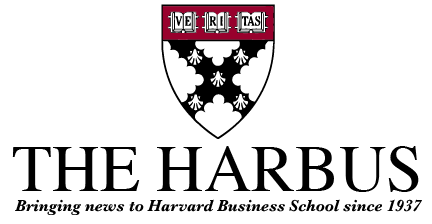
Shrinking the world at supersonic speed could be a reality in less than a decade, says Sergio Porres (MBA ’19).
Innovation and progress have completely transformed the way the world looks, particularly in the last few decades. The pace of scientific development has been breathtakingly fast, with consumers benefiting handsomely, from the rise of electronics and the internet to the development of new medical procedures and drugs. However, there is one industry in which customers, at first sight, would rather be in the 1950s. That is commercial aviation.
Commercial aircraft in the 1950s, after the introduction of the jet engine, flew as fast as they do now, six decades later; seats were larger and more comfortable (economy class looked like today’s business); and food and drinks were complimentary. In fact, it could be argued that the industry went backwards, since one of the most admired innovations, supersonic commercial flight, was abandoned in 2003 with the last flight of Concorde, an aircraft designed in the 1970s. Airlines would claim that Concorde was not a sustainable product—its 14 sales to two customers are a good testimony—and that innovation in aviation came through enhanced safety and democratization of the experience: regular economy fares, after adjusting for inflation and purchasing power, used to be four to five times more expensive than they are now. Nevertheless, customers loved Concorde’s luxury and that it cut travel time by a bit more than half (it could fly from Europe to the East Coast in around 3½ hours). It was revolutionary, a masterpiece of engineering designed to withstand well over 212 ºF on its surface due to air friction.
So why did it fail? There were multiple reasons; some were technological, and some associated with the business model. Among the former were range, the sonic boom, heavy maintenance requirements, and high fuel consumption (and thus emissions). Concorde could not even reach the northern part of South America from Europe. It could only fly supersonic over the sea due to the sonic boom, so East-to-West-Coast routes in the United States were not feasible either. Fuel consumption was three times more per mile when compared to modern aircraft, despite carrying less than half the passengers, which, after the oil crisis of the 1970s, made fuel costs skyrocket.
Regarding the business model, the aircraft was probably too large, seating 100 passengers. It was difficult to fill, particularly after demand crashed due to 9/11. Only 14 were sold, so economies of scale did not kick in, either in operation (there were fewer Concorde pilots than astronauts) or in manufacturing. All this resulted in ticket prices somewhere in between those of today’s business and first class.
Does this mean that we must forever resign ourselves to 1950s speeds when travelling? Aerion and Boom beg to differ. Both companies are betting that commercial supersonic travelling will be back soon, so they are investing millions in developing new aircraft. They believe that more efficient new engines, lighter materials, smaller aircraft size, and a sonic boom reduction (with the consequent permission from regulators to fly over land) would make it possible to overcome the challenges that made Concorde uneconomical. Future low oil prices would definitely boost the concept.
Aerion is designing a 12-passenger aircraft to fly around 50% faster than current planes, with a target price of $120 million and an entry into service in 2026, focusing on the business travellers who fly in private jets. Boom, on the other hand, would focus on commercial airlines with a 50-business seat aircraft flying over two times faster than current aircraft, with a target price of $200 million and an entry into service in 2025. The price of the tickets should be equivalent to current business class, thanks to the high utilization—several turnovers in a day—that high speed enables. Nevertheless, range would still be limited in both aircraft to around 5,000 miles, similar to Concorde.
Aerion counts on 600 sales in the first 20 years, while Boom expects demand of 1,000 to 2,000 jets in the first 10 years. That would mean that by 2035, up to 3% of the global fleet will be supersonic. Aerion has attracted the attention of Lockheed Martin and GE, partners in the initiative, and Boom has managed to raise over $150 million and has already achieved 30 orders from Japan Airlines and Virgin.
If engineers are able to deliver on time and on budget (a big if, given the complexity of aerospace), then it is up to the business model to make it work. How could business and first class customers be convinced to switch comfortable flat-bed seats for shorter flying times? How can the model be scaled profitably? What incentives should airlines have to embrace a model that would move its most profitable customers from subsonic aircraft to supersonic ones? Could supersonic private jets benefit from demand from the “Uber of the air” services that are starting to gain traction?
We MBA graduates, as adept corporate travellers and hopefully wealthy enough tourists, are bound to enjoy the benefits if these ventures are successful. But we could also follow Jessica J. Raynor (MBA ’18), Head of Strategic Finance at Boom Aerospace, in taking the pilot seat and shaping this industry’s future by solving some of the aforementioned questions.
Commercial flight shrank the world in the second half of the 20th century. It enabled long-distance tourism and business globalization. Cutting travel times in half will continue deepening that trend, although, at least at first, it will be restricted to high-income or corporate travellers. Imagine yourself flying for a meeting from London to New York and back in the same day. Or from New York to San Francisco. Or in your miserable CEO position wishing to fly your private jet to the Bahamas for a quick dip in the Caribbean before the next day’s shareholder meeting. First world problems could still bring back to life a revolution from the 1970s.

Sergio Porres (MBA ’19) is from Spain and is an enthusiast about the aerospace industry. Professionally, he has experience in the industry, having worked at Airbus, the European aircraft manufacturer, and Iberia, the Spanish flagship airline. He also spent two years at Bain & Company, both in Spain and in the Middle East. Sergio graduated in 2014 in Aerospace Engineering from UPM.


